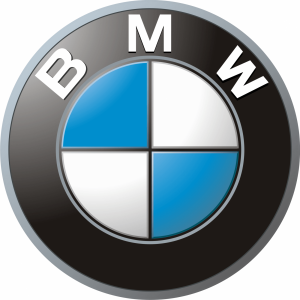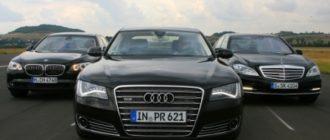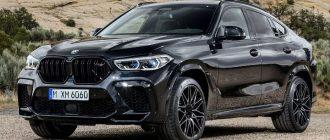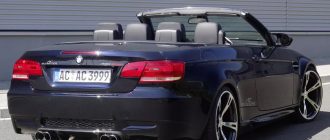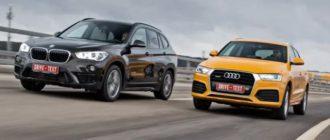BMW Alpina B10 is renowned worldwide. Those who have experienced BMW in practice, not just by hearsay, will never refuse to be behind the wheel of an Alpina. Moreover, all fans of this brand are intrigued by the E34 body. Car enthusiasts, at their respective times, were offered five different variants of Alpina cars.
Versions include:
- B V10 3.5/1.
- B10 Biturbo.
- B 10 3.0 All Wheel Drive.
- B10 4.0.
- B 10 4.6.
And now, let's delve into each car in more detail.
BMW Alpina B10 3.5/1
These cars are classified under the «3» age group with the fifth series. They were manufactured in 1988 and are equipped with 3.5-liter engines. They deliver 254 horsepower. Interestingly, the later B6 3.5 models also feature similar catalytic converter power. The engines underwent modifications, including:
- new Mahle pistons;
- cylinder head blocks;
- camshafts;
- reprogrammed control units.
The base models of BMW Alpina B10 shared current exhaust systems and catalytic converters. Once assembled, the cars received 254 hp and torque of 325 Nm.
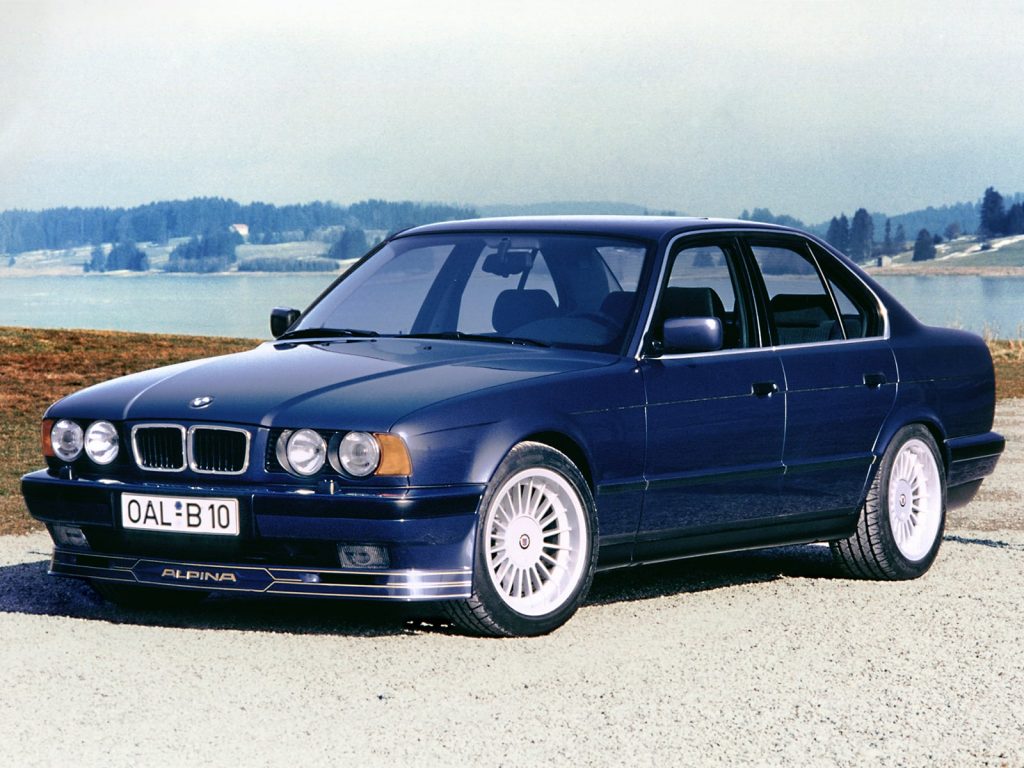
Paired with the engines were five-speed manual transmissions. However, drivers had the option to choose four-speed automatic transmissions if desired.
All these specifications influenced the suspension components, which also needed improvement. Bilstein, for Alpina, executed a custom order for the production of springs and shock absorbers.
Developers also enhanced the Alpina braking system and discs, which became 17-inch, paired with 235/45 and 265/40 tires, respectively for front and rear.
The interior of BMW Alpina B10 saw seat replacements. Recaro took on the production of these seats. The cars were equipped with new Momo leather steering wheels and new gear knobs for gear shifting.
The exterior remained almost unchanged, with only modifications to the front spoilers, wheels, exhaust pipes, and badges.
Manufacturers aimed for the cars to accelerate in 7.4 seconds and operate at a maximum speed of 252 km/h.
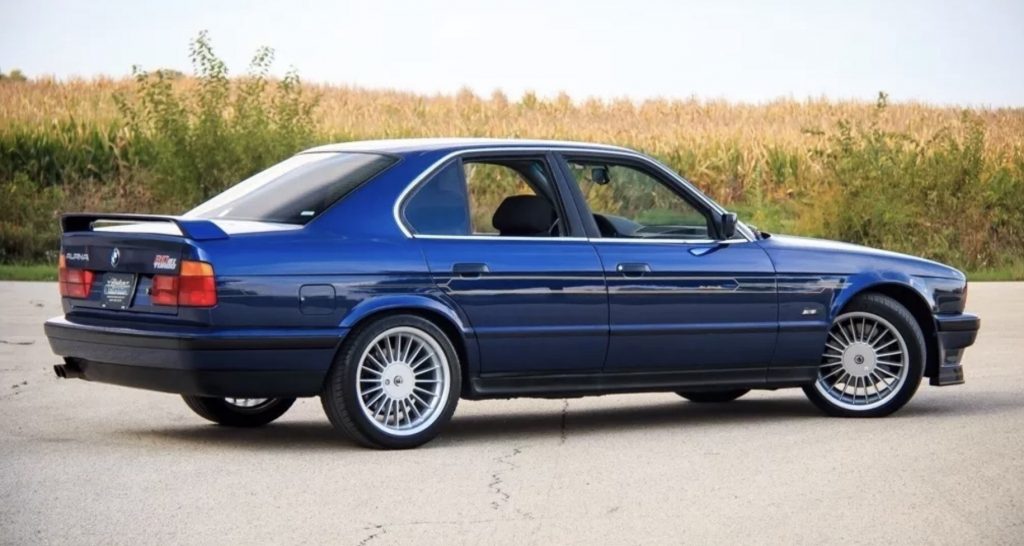
Test drives demonstrated the stated acceleration and maximum speed of 255 km/h. The final cars were produced at the end of 1992. A total of 572 car enthusiasts became proud owners of these cars.
BMW Alpina B10 Biturbo
Another equally legendary model appeared in the spring of 1989. These are the fastest BMW B10 5 Series with the E34 body. It took $3.2 million and two years of engineering work to develop and create them.
The B10 4.0 cars were produced from 199
The cars were equipped with twin-turbocharged six-cylinder engines with 3.5 liters, considered the best turbocharged units.
They were based on the BMW 535i. Distinguished by sporty body kits with spoilers, these cars had increased downforce. They also featured 17-inch wheels with the famous «spiky» design. The sides of the cars were adorned with silver or gold stickers displaying the Alpina logo.
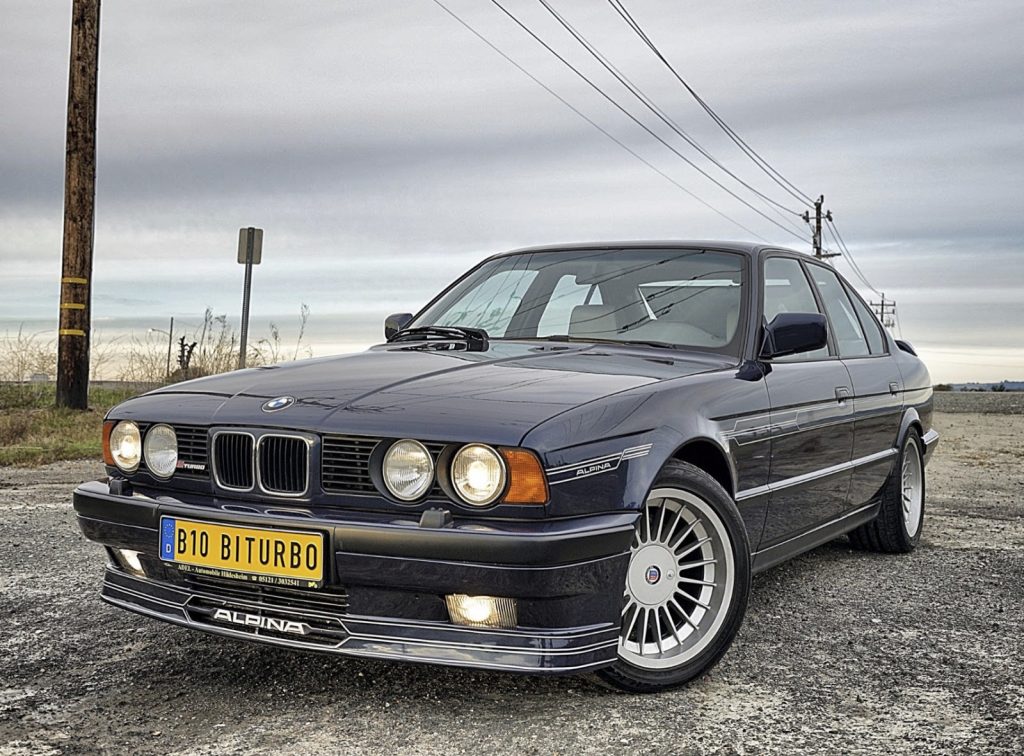
Their engines deserve special attention as they differ significantly from the M30. With 3430 cc volumes, the engines underwent:
- Installation of new camshafts.
- Placement of stronger pistons, valves, and springs.
- Bosch Motronic M3.3 fuel systems, delivering 360 hp at 6000 rpm.
- Enhancements to injectors and intake mechanisms.
- A completely new twin-turbo installation in each car.
Developers made efforts to conceal the turbos deeply within the cars. Even when lifted, they remained unseen, positioned behind large intercoolers where the front bumpers were attached. Notably, the model logo was present on the bumpers.
Thanks to the turbos, the cars accelerated swiftly, pressing passengers into their seats like during takeoffs and landings in airplanes. It's no wonder these cars had a torque of 552 Nm. Therefore, during quick starts, the cars had to squat on their rear axles, clearly felt in the cabins. Due to these antics, the cars struggled to maintain their trajectory even in third gear.
To prevent significant drifts, the cars were equipped with stability control mechanisms (ASC) with automatic management. If unnecessary, these could be deactivated.
The engines were paired with the signature five-speed Getrag 280/5 transmissions. Additionally, the cars featured differentials with locking options along with Bilstein shock absorbers engraved with Alpina insignias.
The discussion on ventilated brakes in the cars is worth mentioning.
Equipped with ABS, the front Alpina-produced components included perforated discs with four-piston calipers. The discs measured 33.4 cm. The rear installation was borrowed from the BMW M5. With these cars, one could quickly accelerate to 290 km/h and also come to a rapid stop.
In these instances, one can look at the work of track racers with BMW performance vehicles as an example.
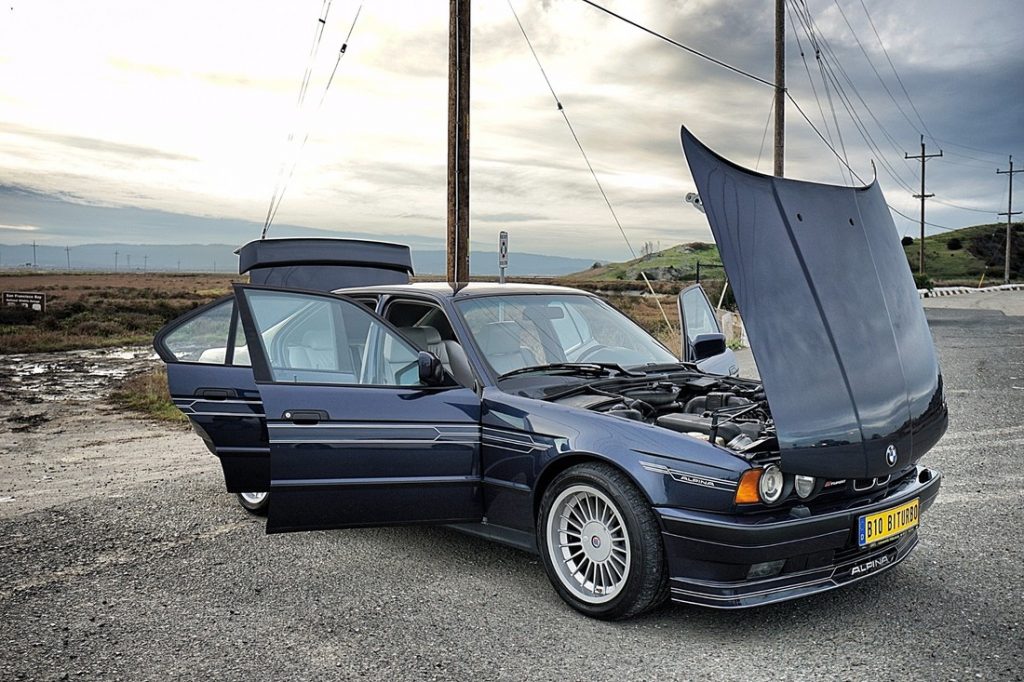
With a weight of 1695 kg, the cars accelerated in 5 seconds but consumed a considerable amount of fuel. With mixed cycles, they could consume 16.9 liters per 100 km. Hence, the fuel tanks were increased from 80 to 119 liters.
Standard tires provided were Michelin MXX. Front tires were 235/45, while rear tires were 265/40 ZR 17.
There were minor changes in the interiors, but they were insignificant.
- The seats had the signature Alpina stitching with a masculine appearance. The same stitching adorned the door panels, gear lever handles, and sills. The speedometers digitized up to 320 km/h, surpassing the M5's 300 markings. The speedometers were also adorned with logos.
- Instrument panels had oil pressure and temperature sensors. Pressure sensors were installed on the instrument panels to adjust the turbocharger pressure via inconspicuous instruments at the base of the central consoles.
- The cars did not display factory numbers, but underneath the ashtrays, there were plaques duplicating the numbers.
Managers paid particular attention to this during car sales. If drivers wanted to order engine parts like pistons or valves, they had to provide this number. Otherwise, they would not receive the desired spare parts.
The cost of the cars amounted to $152,500. A total of 507 car enthusiasts became owners of these top-class vehicles, according to racing driver Paul Frère. Production ceased in 1994. Most of these cars can now be found in the hands of owners in Japan and Europe.
BMW Alpina B10 3.0 All Wheel Drive
These BMW B10 cars were based on the BMW 525iX. The three-liter engines produced 231 hp, up from 192 hp. The cars were sold as sedans and estates.
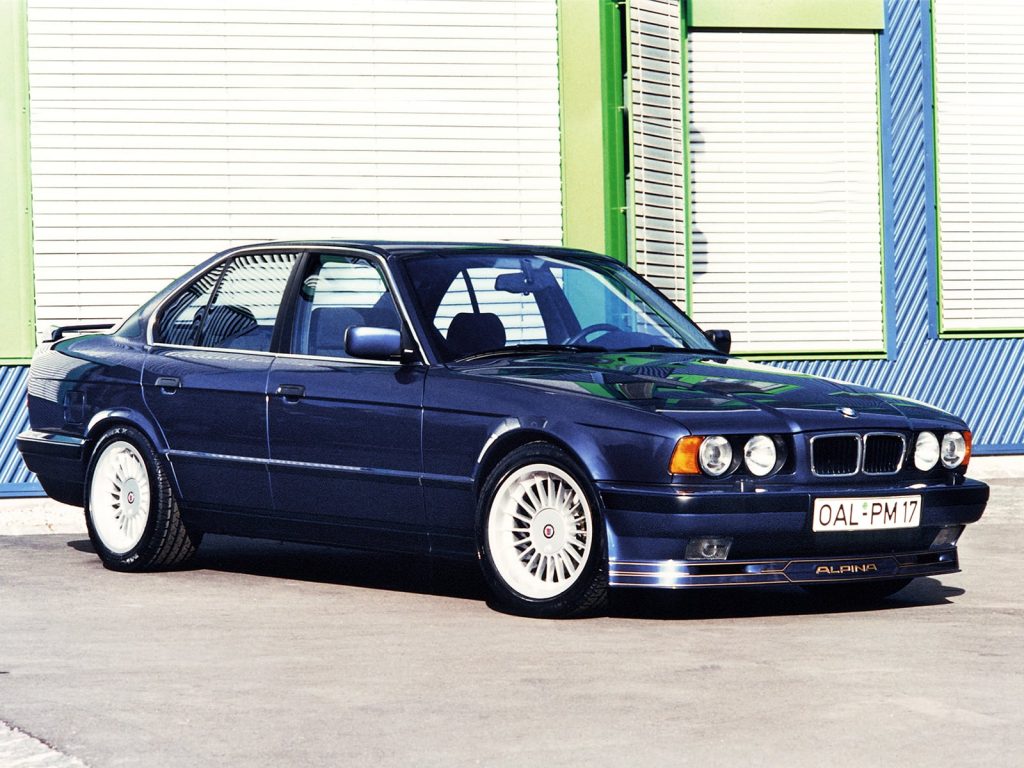
Production began in 1993 and concluded in October 1995. Sedans saw 64 owners, while 70 estate versions were produced over the following three years.
The cars were equipped with:
- inline six-cylinder engines E3/1 2.9 liters;
- 312 Nm of torque;
- 170 hp for sedans and 231 hp for estates;
- Sedans accelerated in 7.9 seconds, while estates did so in 8.4 seconds;
- On highways, fuel consumption at 90 km/h was 7.7 liters, 8.0 at 100 km/h, and 9.2/9.6 at 120 km/h; urban consumption was 13.4 and 13.7 liters.
BMW B10 4.0 4.6
The company gradually phased out the B10 3.5/1, including the Biturbo models, as BMW decided to discontinue the production of 3.5-liter inline-six M30 engines. They opted to replace them with new V8 units.
The 4.0 and 4.1 models now featured these engines. Sedan and touring body styles were available. The introduction of the new B10 4.6 cars occurred in March 1994.
Restyling processes were also implemented in the 4.0 engines.
- These engines matched the original V8 literages that operated in the 540i models.
- They were fitted with high compression ratios in Mahle pistons.
- New intake mechanisms were installed, and the Motronic control units were reprogrammed to manage the power units.
- The engines produced 315 hp and 410 Nm, up from 286 hp and 400 Nm in the 540i models.
- The engines worked with six-speed manuals or five-speed automatic transmissions.
The 4.6 models featured the same engines as the E36 V8 4.6 cars.
- These engines delivered 430 hp.
- With torque of 480 Nm.
- An additional 7 hp and 10 Nm of torque were obtained through exhaust system upgrades.
Drivers were provided two transmission options: a six-speed manual or optional Switch-Tronic gearboxes.
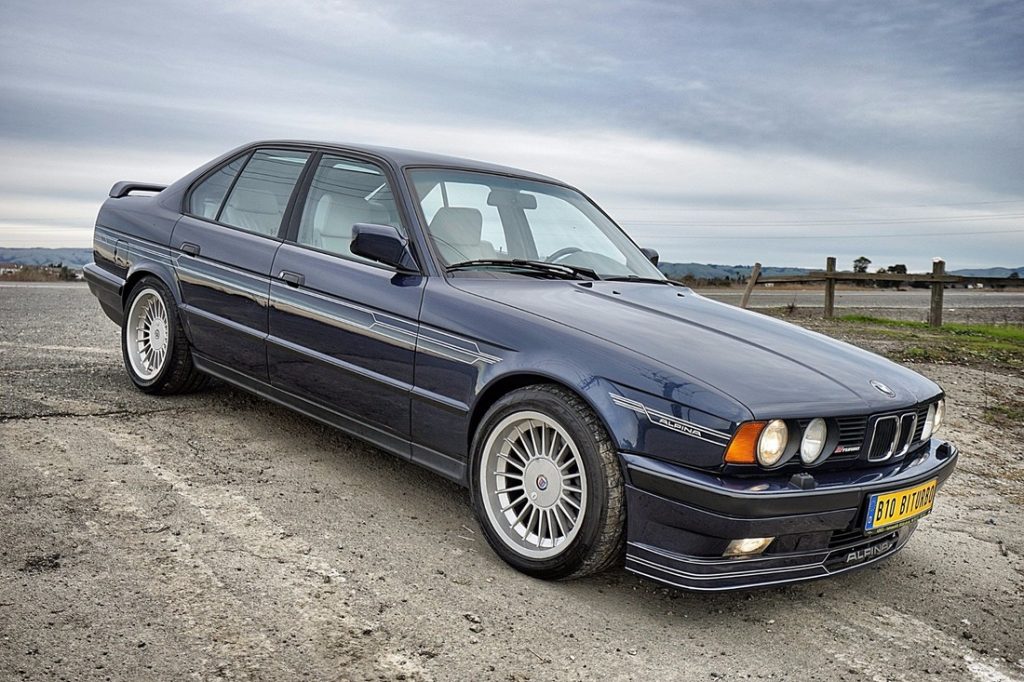
Both variants of BMW Alpina B10 were equipped with suspension components featuring gas shocks, stiff springs with a variable element. They were fitted with 17-inch wheels with front tires at 23.5 cm and rear at 26.5 cm.
The interior salons saw similar changes to their predecessors, the B10 3.5/1 models. The only minor differences were in the steering wheels.
Exteriorly, the sizes of front spoilers and grilles were expanded. The B10 4.6 cars had the same enhancements, with the addition of rear spoilers for standard kits.
- The B10 4.0 could accelerate in 6.5 seconds, reaching a maximum speed of 265 km/h.
- The B10 4.6, although not turbocharged, accelerated in 6.4 seconds. It took 14.2 seconds to reach 160 km/h and 23.1 seconds for 200 km/h, with a maximum speed of 275 km/h.
